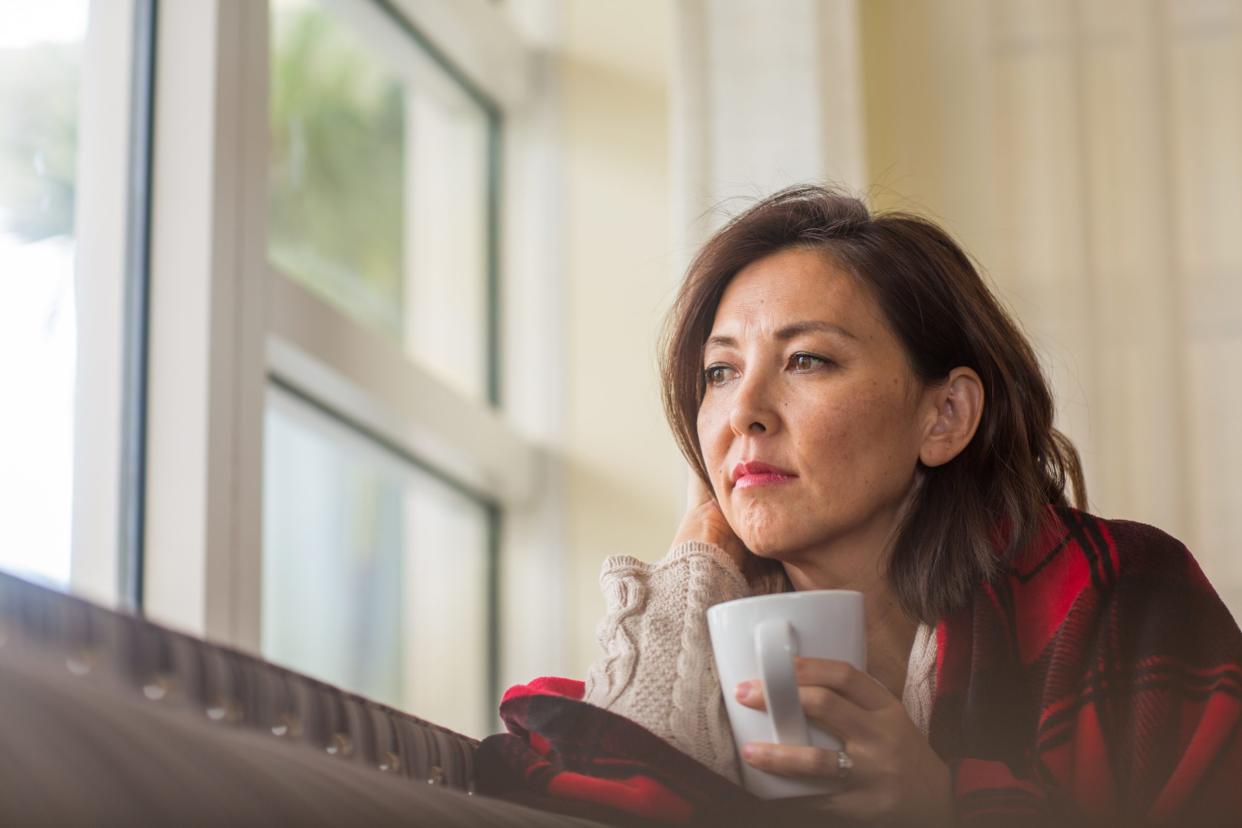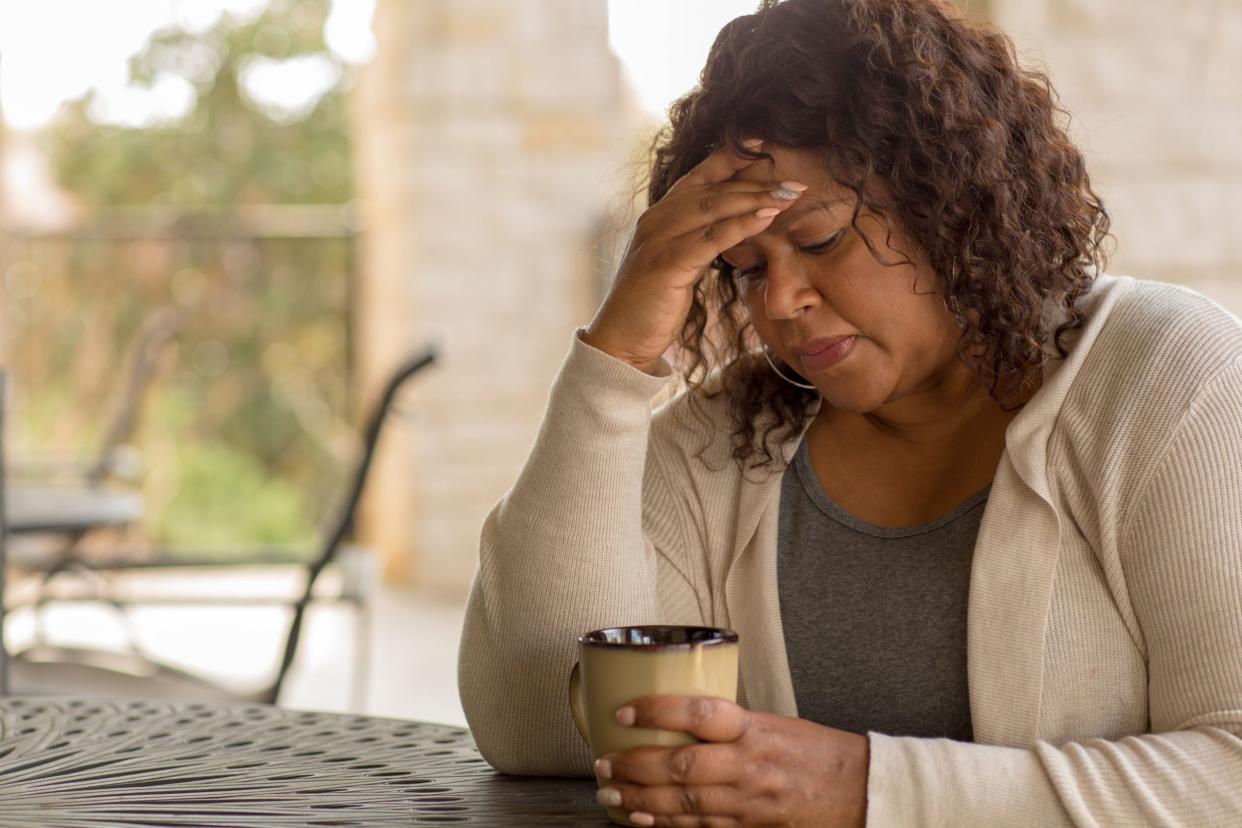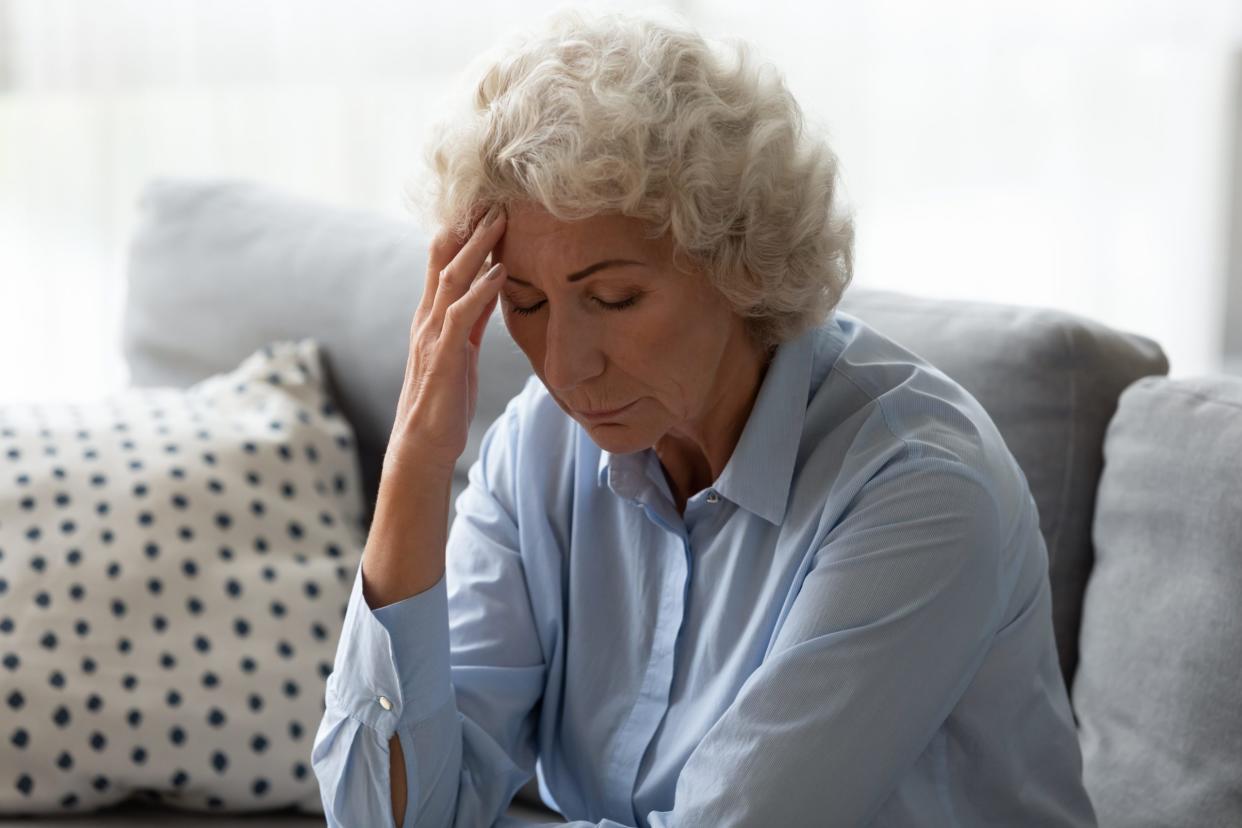Things You Might Not Know About OAB—and 4 Things You Can Do About It
OAB can occur when you can’t control your bladder contractions.4 Nearly 30 million Americans age 40 and older experience bothersome OAB symptoms.1 These symptoms can include an urgent “gotta go now” feeling, needing to pee more than eight times per day, and occasionally even leaking urine.1
Though OAB can affect men, it predominantly affects women.1 Having OAB might mean you map out the bathrooms at a destination before even getting in the car, or wear a dark outfit, “just in case.”3 You may prefer to stay home instead of leaving the house.2

For Marilyn, 73, the embarrassment of talking about her frequent close calls kept her from discussing symptoms with her doctor for almost two decades. She began noticing changes in her bladder health in the early 2000s. “Many years ago, I noticed that I needed to use the bathroom a lot more than other people. I love to go hiking and camping, and it just made the outings really uncomfortable,” she recalls.
When symptoms worsened for Marilyn, an active retiree, she tried to manage them by limiting her fluid intake, something doctors don’t recommend due to dehydration risk.3 “I stopped drinking coffee before trips, or I’d just take small sips of it. I would be careful about where I went and would call ahead to ask if there were bathrooms there before leaving my house. I just thought it was something I had to live with, and I believed it was simply a part of getting older. It was frustrating and embarrassing, and it went on for a while. I just dealt with it.”
The breaking point for Marilyn came during a shopping trip for her garden. “I was loading the plants in my truck when the urge hit. I froze and tried to will it to stop and I couldn’t. I had an accident in the parking lot. That’s when I thought, ‘That’s it. I’ve got to do something about this.’”
There is no cure for OAB but there are interventions, from lifestyle adjustments to medical interventions.5, 6, 8 Here are some things you might consider trying (and it’s always a good idea to talk to your doctor):5

1. Reduce caffeine
Sometimes the answer is simple—even if it isn’t what you want to hear. We all love our coffee in the morning, but caffeine can irritate your bladder.7 Decreasing the amount of caffeine you consume may help decrease your symptoms, too.7
What you can do about it: Try decaf coffee or caffeine-free herbal tea in the morning.7
2. Strengthen weak pelvic muscles
Both men and women can leak urine, but there are exercises to strengthen your pelvic floor muscles.8
What you can do about it: Practicing Kegel exercises or bladder training can help manage leakage.9,10

3. Keep a Bladder Diary
Knowing how much liquid you drink, how often you urinate, and when you experience urine leakage can give you a good sense of your bladder health and could pinpoint triggers that might be causing problems.5 A bladder diary helps you track each of these.5 It might seem like too much information, but cataloging these things can help you, or your health care provider, see a pattern between liquids and leakage so you can avoid the triggers that may be irritating your bladder.5
What you can do about it: Free, downloadable bladder diaries are available online. Print one off and begin recording your urinary habits. Typically, this is done over a three-day period to establish bladder urinary patterns.5

4. Talk to your doctor
If your symptoms are persistent no matter what you do, you should talk to your doctor. OAB is vastly underreported by those who have it since patients live in silence due to embarrassment or because they mistakenly believe the symptoms to be a normal part of aging.3 Consider having a conversation with your doctor about the causes of your peeing habits, including whether you may have OAB.8
What you can do about it: To help facilitate a discussion with your doctor, utilize a doctor conversation tool like the one that can be found at this OAB treatment site. Answer the questions, print the results and take it with you to your next visit.
—
Marilyn finally made an appointment with her doctor in 2016 — 16 years after she first noticed her symptoms. After some testing and discussions with her doctor, Marilyn was diagnosed with overactive bladder. Her doctor recommended she try Myrbetriq®, also known as mirabegron, a prescription treatment approved in 2012 to treat OAB symptoms of urgency, frequency and leakage.11 “The doctor said, ‘There are meds you can take that might help. Let’s try one and see.’ Myrbetriq is the only one I’ve tried, and for me, it has really helped,” she explains.
Use of Myrbetriq
Myrbetriq® (mirabegron) is a prescription medicine for adults used to treat overactive bladder (OAB) with symptoms of urgency, frequency and leakage.
Important Safety Information
Myrbetriq is not for everyone. Do not take Myrbetriq if you have an allergy to mirabegron or any ingredients in Myrbetriq. Myrbetriq may cause your blood pressure to increase or make your blood pressure worse if you have a history of high blood pressure. It is recommended that your doctor check your blood pressure while you are taking Myrbetriq. Myrbetriq may increase your chances of not being able to empty your bladder. Tell your doctor right away if you have trouble emptying your bladder or you have a weak urine stream.
Myrbetriq may cause allergic reactions that may be serious. If you experience swelling of the face, lips, throat or tongue, with or without difficulty breathing, stop taking Myrbetriq and tell your doctor right away.
Tell your doctor about all the medicines you take including medications for overactive bladder or other medicines such as thioridazine (Mellaril™ and Mellaril-S™), flecainide (Tambocor®), propafenone (Rythmol®), digoxin (Lanoxin®) or solifenacin succinate (VESIcare®). Myrbetriq may affect the way other medicines work, and other medicines may affect how Myrbetriq works.
Before taking Myrbetriq, tell your doctor if you have liver or kidney problems. The most common side effects of Myrbetriq include increased blood pressure, common cold symptoms (nasopharyngitis), dry mouth, flu symptoms, urinary tract infection, back pain, dizziness, joint pain, headache, constipation, sinus irritation, and inflammation of the bladder (cystitis).
For further information, please talk to your healthcare professional and see accompanying Patient Product Information and complete Prescribing Information for Myrbetriq® (mirabegron).
You are encouraged to report negative side effects of prescription drugs to the FDA. Visit www.fda.gov/medwatch or call 1-800-FDA-1088.
For more information about overactive bladder and treatment with Myrbetriq visit www.myrbetriq.com.
This article is not intended to be a substitute for professional medical advice, diagnosis or treatment. Always talk with your doctor before starting any diet or exercise program. This article is sponsored by Astellas.
Myrbetriq® is a registered trademark of Astellas Pharma Inc. All other trademarks or registered trademarks are the property of their respective owners.
© 2020 Astellas Pharma US, Inc. All rights reserved.
1 Coyne KS, Sexton CC, Vats V, Thompson C, Kopp ZS, Milsom I. National community prevalence of overactive bladder in the United States stratified by sex and age. Urology 2011;77(5):1081-7.
2 Reynolds WS, Fowke J, Dmochowski R. The burden of overactive bladder on US public health. Curr Bladder Dysfunct Rep 2016;11(1):8-13.
3 MacDiarmid S. Maximizing the Treatment of Overactive Bladder in the Elderly. Rev Urol 2008;10(1):6-13.
4 Andersson KE, Arner A. Urinary bladder contraction and relaxation: physiology and pathophysiology. Physiol Rev 2004;84(3):935- 86.
5 Wyman JF, Burgio KL, Newman DK. Practical aspects of lifestyle modifications and behavioral interventions in the treatment of overactive bladder and urgency urinary incontinence. Int J Clin Pract. 2009;63(8):1177-91.
6 Gormley EA, Lightner DJ, Burgio KL, et al. Diagnosis and treatment of overactive bladder (non-neurogenic) in adults: AUA/SUFU guideline. American Urological Association Education and Research, Inc. 2019.
7 Interstitial Cystitis Network. 2012 ICN Food List for Interstitial Cystitis, Bladder Pain Syndrome, Overactive Bladder (2012). http://ic-network.com/downloads/2012icnfoodlist.pdf. Accessed 06-08-2020.
8 National Institutes of Health. What I Need to Know About Bladder Control for Women. NIH Publication No. 07-4195. Bethesda, MD: National Kidney and Urologic Diseases Information Clearinghouse, 2007.
9 Urology Care Foundation. What are Pelvic Floor Muscle Exercises? https://www.urologyhealth.org/urologic-conditions/pelvic-floor-muscles. Accessed 05-27-2020.
10 Burgio KL. Pelvic floor muscle exercises and behavior therapy. In: Kreder K, Dmochowski R, edst. The Overactive Bladder Evaluation and Management. Informa Healthcare, 2007:87-94.
11 Myrbetriq [package insert]. Northbrook, IL; Astellas Pharma US, Inc.
The post Things You Might Not Know About OAB—and 4 Things You Can Do About It appeared first on Reader's Digest.
